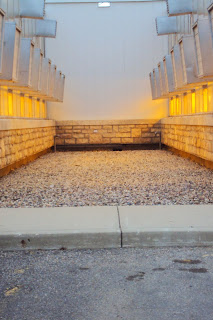Is it self-serving if I do a review of one of the sites my archive has developed? How about if it is from before I worked there?
The University of Saskatchewan Archives and Special Collections has long held it a mandate to make available online interesting or valuable elements of their collection. They take digitization of archival materials, and the production of topic-focused websites very seriously. The idea is to digitally synthesize holdings so that they can be viewed from new or different perspectives. The value of this practice as an outreach tool is obvious, and while sites such as this may be of less use to the experienced researcher, they are a good way of making archival materials available, accessible, and easily understandable to the public at large.
One example I stumbled across today:
At Work: Historical Images of Labour in Saskatchewan
So, lets talk about this little gem. It was created in 2010, and so (yeah yeah, just three years old) is slightly outdated. Splash pages are outdated, but I like the image they chose here. The project was conducted in combination with the efforts of a number of other local archives. The introductory page is well written, explaining the purpose of the digital collection as showing that we do, in fact, do more in Saskatchewan than agriculture. The scope of the project covered those labourers paid a wage for their work, which was of a manual or non-professional nature. Determining the scope of a project like this is often the hardest part, I'll add. Its easy to say "I want to digitize every picture of a woman in a dress within this archive" but its much less easy to actually DO it.
The first point of access to the actual galleries is through the "Themes", which are an array of subject headings, each with its own explanation, and a link to the gallery in full. Personally, I am not a huge fan of this approach, as it reads too much like a book and too little like a website -- not to mention being an affront to the three click rule for those wanting to get at the meat of the site: the gallery. Nevertheless, the topics listed and information attached make for interesting browsing, and therefore may be of use to the casual explorer rather than the determined researcher.
The second point of access is through the "Search all images" function. The only thing I would change here would be to make the search more dominant and friendly to those young "scholars" growing up in the "Google age". Obviously, the search feature is nowhere near as advanced as Google, but is quite functional and easy to use (and useful) for what it is. Its easy to forget that developing an uber-search-algorithm is something libraries and archives just don't have the resources for, and this can be a source of frustration for researchers who are used to the cleverly ranked and sorted results they get through a Google search engine.
Another point of access targeted at casual browsers is the random image feature, which pulls up fifteen or so random images from the collection for the user to look at. I LOVE this feature. I think its playful and clever and fun, and a good way to figure out what in the collection might interest you without limiting yourself to a theme right off the bat.
There is a separate page for video clips, which is always impressive: film is neither easy nor cheap to digitize. The only issue here is that the videos aren't searchable through the search page. Of course, this is maybe not an issue at all, because there aren't that many videos to begin with, and so are easy to browse.
The site then goes on to provide educational resources, including book suggestions in excerpts related to labour in Saskatchewan, a brief historical survey of labour in Saskatchewan (listed as a resource for teachers, but really a solid background resource for pretty much anyone), and most importantly, an extensive bibliography to spur further study. Copyright and contact information for all of the participating archives is also provided, as well as a list of acknowledgements, and the (little-used, but still helpful) site map.
All in all, this is a compact, well targeted site. Visually, I think it has its own charm although it isn't the prettiest archival site out there. I especially like the moving sidebar which prevents over-scrolling. The gallery is easy to use, and the metadata on the photos is magnificent.
K, I'll quit patting my office on the back now. . .








